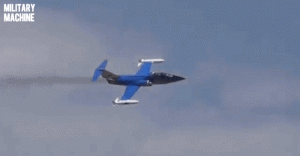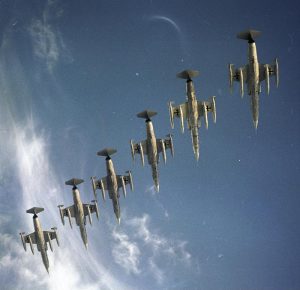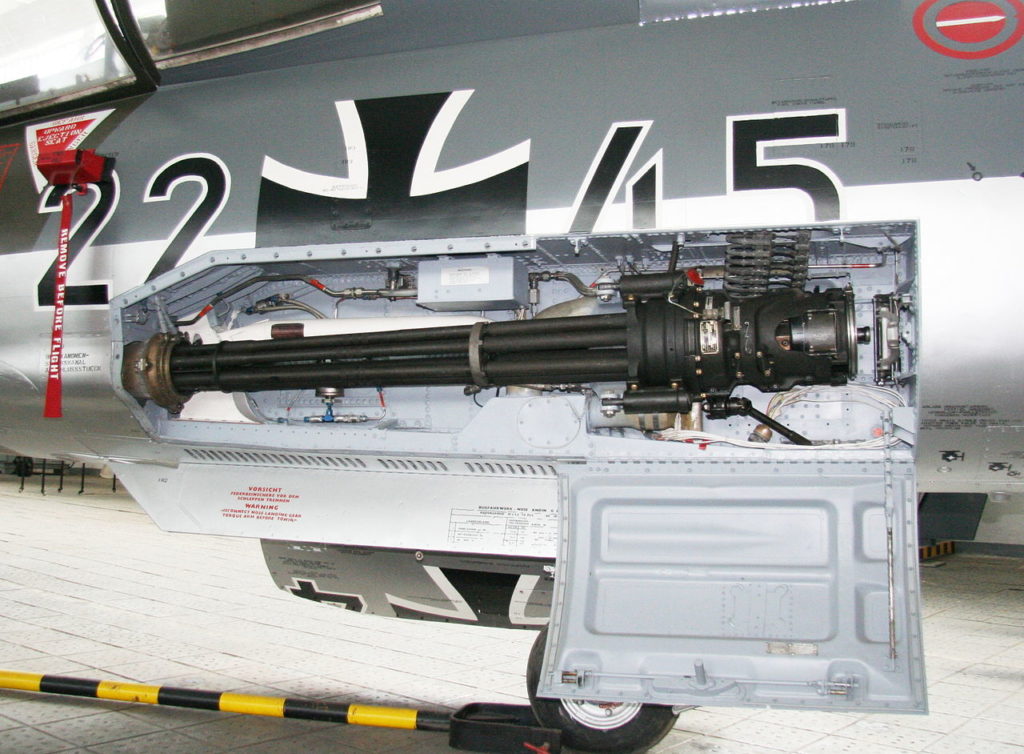The F-104 Starfighter Mid-Century Fighter
Lockheed’s F-104 Starfighter is perhaps the best example of what happens when the drawing board goes to the flight deck with absolutely no checks and balances along the way. Sleek, aerodynamic, and capable of Mach 2, the F-104 appeared to answer all the needs of the United States Air Force when seeking a 1950s air superiority fighter. In practice, however, it proved to be little more than a fast moving “lawn dart”.
Performance:
The Starfighter had no radar systems and depended upon clear, near-perfect weather conditions to be combat effective. It arrived in time to fight in the Korean War, where it achieved about a 1:1 ratio against Soviet pilots. Public relations attempted to correct this multiple times by saying the Starfighter achieved a 15:1 ratio against MiG-15s and 19s, but absolutely nothing corroborated this.

Reliability Issues:
Since its release in 1954, the F-104 Starfighter promised to be the pivotal answer to an increasingly fast, jet-powered fleet of fighter aircraft. It was meant to be an air superiority aircraft. And it was purchased in staggering bulk by the United States Air Force. At its height, almost 300 Starfighters were in the fleet. Unfortunately, it was also known for disastrous accidents, an atrocious air-to-air and air-to-ground record, and had an incredible difficulty landing. Of the original 300 Starfighter, 49 crashed due to accidents and 18 pilots lost their lives as a result. And sadly, this was only the beginning.

The F-104 Was Designed Purely For Speed:
The Starfighter was built like a guided rocket — which would have been perfectly fine if a guided rocket didn’t have a pilot and a 20mm cannon attached. Capable of holding heat-seeking missiles, it had no radar guided systems. As a nuclear interceptor, it had no capacity to target track a Soviet bomber or outmaneuver any fighter escort. But it could move fast! The Starfighter could achieve Mach 2 speeds and definitely outrun other fighters in the air. It came as a response to the extremely small MiG-15s that NATO was running into in Korea and Vietnam. Unfortunately, those MiG-15s were small, compact, and capable of maneuvering better than the F-104.
The F-104 Starfighter featured a downward-facing ejection seat, initially, which exacerbated problems for pilots traveling routinely at speeds above Mach 1.8. In one particular case, a test F-104 pilot tried to flip the bird upside down before ejecting. Unfortunately, he hit the desert before completing the role. The cause of the crash was determined to be an engine burn-out.

Very Brief Deployment In Vietnam:
Featured for a very short time in Vietnam, the F-104 found itself ill-equipped to handle close air support but was assigned to it anyways. Too fast and no ability to steer, the F-104 became easy prey for Vietnamese MiGs and anti-aircraft ground fire. In one particularly disheartening incident, a F-104 Starfighter accidentally passed over the border into China and was shot down by a MiG-19 variant aircraft. Two more F-104s were deployed to try to find the fallen F-104 and ended up hitting each other.

Tactics:
The entire strategy of the F-104 depended upon punching through enemy formations, turning around, and then targeting them from the rear with heat-seaking missiles. At no point in time was the F-104 Starfighter meant to hold its own in a dogfight. In fact, it routinely wouldn’t. By 1967, all F-104s had been phased out of active duty service. The remaining units were sold to foreign countries, which did not help the aircraft’s reputation. Pilots from Germany, Canada, and Italy all found ways to call it the “flying coffin”. Ironically, the F-104’s greatest contribution was for NASA, due to its high service ceiling and exceptionally fast speeds.
F-104 Starfighter Legacy
The biggest achievement of the F-104 Starfighter was setting a world altitude record of 103,395 feet. This achievement occurred on December 14, 1959. A high service ceiling proved to be one of the lasting achievements of this aircraft and many of its design components would be used in much later missiles.

Powerplant:
The F-104 Starfighter was powered by a lone General Electric J79-GE-11A afterburning turbojet. This turbojet could produce up to 10,000 lb-ft of dry thrust or 15,600 lb-ft with afterburner.
See F-104 Starfighter Specifications:
| Height: 13 feet 6 inches (4.09 m) |
| Length: 54 feet 8 inches (16.66 m) |
| Wingspan: 21 feet 9 inches (6.36 m) |
| Empty Weight: 14,000 lbs. (6,350 kg) |
| Max. Takeoff Weight: 29,027 lbs. (13,170 kg) |
| Maximum Speed: 1,328 mph (Mach 2.01, 1,154 kn, 2,137 km/h) |
| Ferry Range: 1,630 mi (1,420 nm, 2,623 km) |
| Service Ceiling: 50,000 feet (15,000 m) |
| Crew: 1 |

